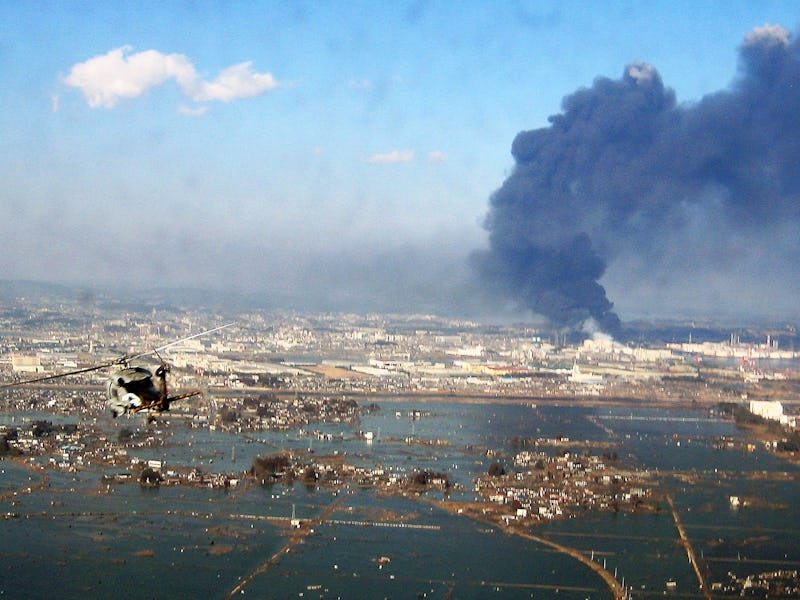Here's How a Tsunami Wave Can Rise 1,700 Feet
Tsunamis look deceptively benign and are extraordinarily powerful.

Five years ago a devastating earthquake struck off the coast of Japan. As if the shockwaves weren’t bad enough, the tsunami that followed was devastating. In some places the wave reached a height of 133 feet, and in others, it travelled six miles inland. It wiped out nuclear power infrastructure, causing the three meltdowns at the Fukushima plant. In all, the earthquake and tsunami killed 16,000 people and damaged more than a million buildings.
When a lot of people think about tsunamis, they picture the sort of big wave that the only most foolhardy surfers seek out — a behemoth rising from the sea and breaking into a sharp crest, maybe with a tunnel. But tsunamis are very different in character from normal wind-blown ocean waves. They are in a way less visually dramatic, but at the same time dramatically more powerful and dangerous.
Regular waves have a relatively short wavelength — the distance from crest to crest. When they roll into shallow water, friction against the land causes the wave to slow down. As the wavelength decreases, the wave height increases correspondingly, resulting in a wave that becomes increasingly sharp and steep. In some cases, the wave becomes so sharp that it destabilizes and breaks forward, as the faster-moving water at the top of the crest overtakes slower parts of the wave below.
This is not a tsunami.
Tsunamis are caused by earthquakes or other events that suddenly displace a large quantity of water and therefore destabilize the equilibrium of the ocean. They typically have very long wavelengths — 100 miles or longer. Out in the ocean, they are almost imperceptible — you could float over one on a small boat and not notice. It could take ten minutes to ride from the bottom of the wave to the top and back down again.
But although the tsunami has a gradual slope, it is extremely powerful. Just imagine the amount of energy contained in a 100-mile-long wave traveling at a speed of 600 miles per hour across the ocean. When it strikes land, it appears not as a breaking wave but as a very quickly rising tide, coming in with the force of all that water behind it.
What a tsunami does when it makes landfall depends on the features of the coast it hits. If the wave can’t travel forward, it will go up. The highest tsunami ever recorded hit Lituya Bay, Alaska, in 1958. The narrow fjord and its steep mountain walls left nowhere for the water to go but up as the force of the tsunami kept pushing in from behind. The force of the wave took out trees 1,720 feet above sea level.
If a tsunami hits a relatively float shore, the wave will push inland rather than up. A tsunami can travel distances of 10 miles or more past the shoreline. And although the wavelength is long, tsunamis come in sets just like regular waves — just because one has come and gone doesn’t mean there isn’t a bigger one coming behind.
All this to say, if you’re near a coast and hear a tsunami warning, don’t look out to the ocean and expect to see a large wave cresting in the distance. You may see no wave at all. This doesn’t mean you are safe. Instead — turn, run, and get to the highest ground possible as quickly as possible. It may not look like much, but once a tsunami arrives it will destroy everything in its path.